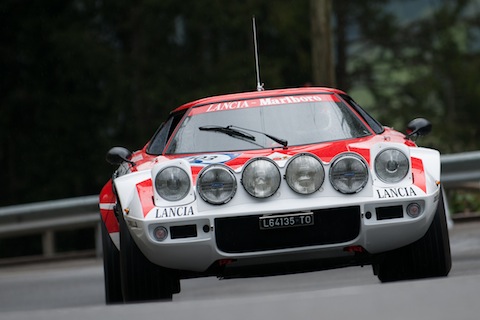The attempt to save Lancia ... which ultimately failed
11/02/2018

It was in the spring of 1977 when Ferdinand Simoneit wrote a detailed editorial for Auto Motor und Sport on the attempt to save the Italian car manufacturer Lancia. What he wrote back then is particularly thought-provoking today, now that Lancia has been completely abandoned:
"More than 70 years had passed when the company afforded itself the normal: for the first time, Lancia invited its German dealers to visit the factory in Turin to view production and products. For two days, they saw everything that could strengthen their sales power. Werner Perino, as Fiat General Director in Heilbronn also head of the Fiat subsidiary Lancia, thought it was time to tell his 300 salesmen "about the spirit that now reigns again at Lancia". Germany, they learned from the Lancia managers, was the export market of the future for Lancia, and the Italian car company was setting itself up for this future: a complete model range, its own sales department and its own sales force in Germany. Perino: "We want to sell 7,000 to 8,000 Lancia cars in Germany this year." Lancia wants to get back on the radar of German drivers.
It has been more than seven years since Lancia made headlines, albeit not good ones. In the fall of 1969, the Italian government announced that it had asked the management of private car giant Fiat "for a decisive intervention": to take over all shares, obligations and management of Lancia. After 63 glorious years, Vincenzo Lancia, a Fiat accountant who tried his hand at car manufacturing, was finished; Lancia became a Fiat company.
However, Fiat did not know what to do with it at first - everything was too muddled. In 1970, one year after the takeover of Lancia, Fiat sold a total of 179 Lancia cars in Germany; two years later there were still less than 1000. Fiat quietly became involved in Turin, 200 billion lire (540 million marks) were invested and new models were developed that were Lancia-like. The attempt to save Lancia cost even the giant Fiat dearly. And after these years of reconstruction in Turin, Perino thought the time had come to publicly express the hope that the once renowned Lancia brand could be a good addition to the Fiat range.
What could this addition look like? Simply this: Lancia becomes the luxury division of Fiat. Parent company Fiat builds masses of everyday cars and does big business with them. The subsidiary Lancia brings out exclusives for a limited, upmarket clientele - there is a parallel here: Audi NSU is the VW Group's showpiece. Of course, Lancia can only play this distinguished role in the Fiat empire if Fiat itself does not become ambitious again and does not bring out spiced-up versions, coupés or the like.
Lancia has made a promising start. A good range of models is on offer in Germany: Lancia Beta saloon with 1600 and 2000 cm3 displacement, Lancia Beta HPE, the Lancia Beta Coupés 1600 and 2000 as well as the Lancia Beta Montecarlo, a mid-engined car with rear-wheel drive, against which the authorities have withdrawn their objections.
In June, a big one is presented: the Lancia Gamma 2500 saloon with 140 hp at a price of 25,900 marks. The Gamma, a four-cylinder, will be controversial, as experts believe that a six-cylinder engine would have been better suited to this price range. Lancia-Perino: "A technical sophistication that stands up to any criticism."
And in the fall, the Lancia-Gamma Coupé, produced by Pininfarina, is due to arrive - target price: 35,000 marks.
By the end of the year, the new Lancia range will be complete. The attempt to save Lancia looks convincing."
Yes, that was the view around 40 years ago, and we know what has happened since then. Incidentally, we published an article on the Lancia Gamma Coupé a few years ago.









